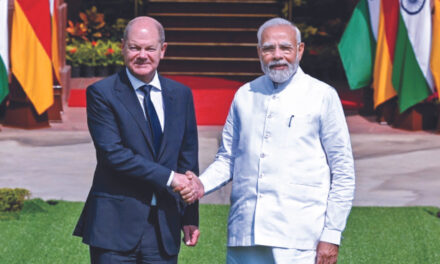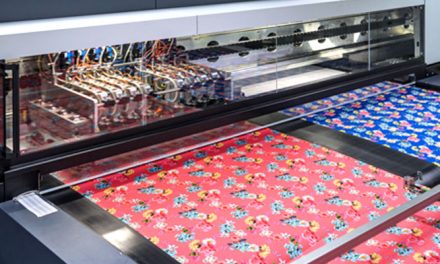
The global and apparel trade is expected to reach a level of $1600 bn by 2025, by a compounded aggregate growth rate of 6.93 percent in the next decade. The EU and the US are the largest textile and apparel markets, with a share of 34 percent and 14 percent respectively. On the supply side, China is the largest supplier of textile and apparel with a dominant share of 40 percent.
If the Free Trade Agreements (FTAs) signed with several countries in the past have not been beneficial to India, the same is true of the FTA with Asean. The result: large scale imports into India, not envisaged by the government. Under the Asean trade pact, Bangladesh, a least developed country (LDC) gets duty free access. Similarly Vietnam though not an LDC receives the same treatment. Imports also include ready-made garments (RMG) and made-ups from Sri Lanka and Vietnam and even China, though it is not a part of Asean, adversely impacting the domestic industry.
Look at made-ups imports. Out of the total imports of 1,214 mn pieces in 2022-23, China accounted for as much as 325 mn pieces (nearly 26 percent) worth $161mn compared to $171 mn in preceding year, according to the Commerce Ministry. Bangladesh had a share of $159 mn against $147 mn during the same period.
The domestic sector is also concerned about cheaper imports of dyed knitted man-made-fibre fabrics from China. For instance, 1 kg of this item costs around $3.50 whereas import price is $1.41. The total import of fabrics which were 319 tonnes per day during 2019-20 increased to 672 tonnes per day during Apr-Aug 2023-24. Even cotton yarn imports surged 295 percent in 2022-23.
Official sources concede that in the earlier FTAs, the “diffidence” shown by New Delhi had led to the country’s isolation and opened the door for products from Bangladesh and Vietnam. To prevent large scale imports a provision was incorporated in the customs act to ensure that FTA benefits are availed of correctly. Subsequently rules for implementing this provision were issued.
A new verification mechanism came into effect later, and is expected to curb the misuse. It requires importers to exercise due diligence before importing goods to ensure that they satisfy the Rules of Origin (ROO) criteria for eligibility of duty concession under FTA and declare this to the customs authorities. Supporting documents and information may also be sought by these authorities and in case of any doubt, deny the concession or allow it provisionally, pending verification. Extensive discussions had been held to sensitize them about the new rules and the need to keep a close eye.
Apart from the global economic slowdown, what has reduced demand has been the prolonged Ukraine Russian war. The absence of FTAs with major markets of EU and US has also impacted India’s exports to the extent of 15-20 percent. India-EU talks on a possible broad-based trade and investment agreement have been put off until after the general elections in India, due to begin on April 19th.
The global demand is for fabrics made from airjet and waterjet looms, warp knitting suitably processed using the latest technologies, including waterless and other eco-friendly dyeing technologies.
Asean had some time ago agreed to review the trade pact. New Delhi however, wants some of the anomalies to be removed, chief among them is the inability of Indian exporters to get a level-playing field. For instance Indonesia had lowered duties on only 50 percent of the items, while close to 75 percent of its products were getting custom duty benefits in India. The same problem persisted in some of the other Asean countries, although those such as Indonesia, are not classified as LDCs. There are other deficiencies. Japanese automobiles can be imported into Thailand and Indonesia at 5 percent duty, while Indian cars face a 35 percent tariff. Same is the case with two-wheelers.
ndian rice face a 50 percent levy against the 35 percent among other Asean members. Another key concern for India is the ROO, meant to keep in check the treaty benefits by countries that are not a part of the agreement. The agreement requires that at least a 35 percent value addition in one of the member countries for a product to get duty advantage in India. Indian cotton spinners allege that China took advantage of the current ROO criteria to dump their finished goods at a predatory price affecting the domestic industry.
It was these reasons that India had pulled out of the Regional Comprehensive Economic Cooperation Agreement (RCEC) with Asean two years ago, arguing that the deal was not favorable to it. The deal could be misused by China to export to India several items like set-top boxes, copper and polyester. While India has data on import through its preferential duty route, corresponding members are inaccessible to it.
FICCI-Wazir advisors study says, the global and apparel trade is expected to reach a level of $1600 bn by 2025, by a compounded aggregate growth rate of 6.93 percent in the next decade. The EU and the US are the largest textile and apparel APPAREL VIEWS / APRIL 2024 29 markets, with a share of 34 percent and 14 percent respectively. On the supply side, China is the largest supplier of textile and apparel with a dominant share of 40 percent. It is distinctly followed by countries like India, Italy, and Germany etc. with an approximate share of 5 percent in the global textile and apparel exports.
The textile sector witnessed a major shift in the last three decades, in terms of production bases. Until the 1980s, production was centered in the US and EU. But over a period of time, production shifted majorly to Asian countries. The shift was due to an attractive low cost manufacturing advantage in the developing Asian countries. As the production of textile commodities was becoming unprofitable for the manufacturers in the US and EU due to rising costs, they sought an alternative destination for the manufacture of textile products. Asian countries with availability of abundant and cheap labor, vast natural resources, and favorable economic policies were the most attractive destinations to manufacture textile products.
China has taken the maximum gain from this shift. After the liberalization of its industrial policies in the 1980s, China experienced a massive boost to industrialization. As a result, China became the hub of manufacturing. Over this period, China emerged as the biggest manufacturing base for textiles in the world, and remained the largest exporter of textiles and apparel in the world.
Other Asian economies such as India, Bangladesh, Indonesia, Pakistan, Vietnam, Cambodia, and Thailand also experienced upsurge in their textile and apparel manufacturing during this period. Now the US and EU have become the largest consumption bases while manufacturing is concentrated in Asian countries like China and India.



















